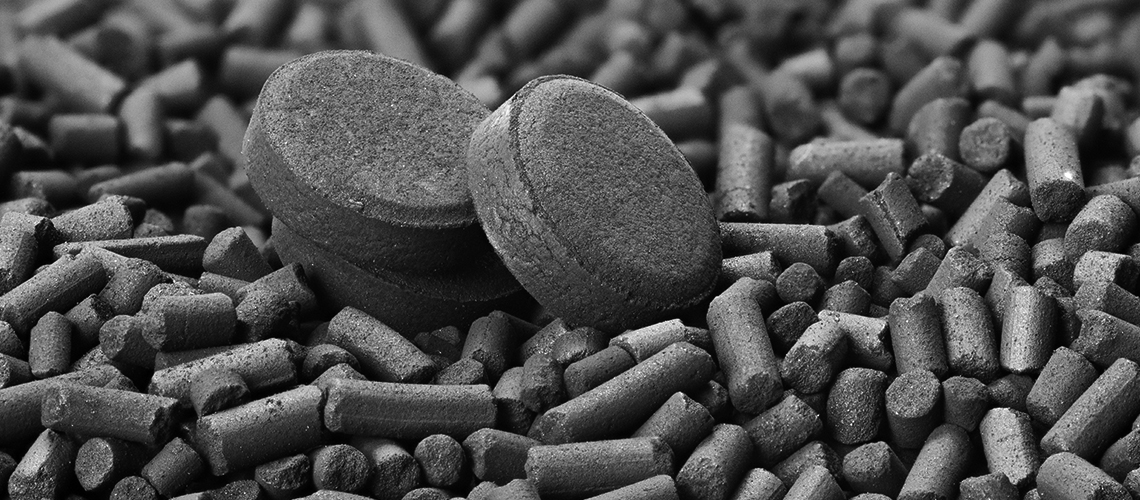It is also referred to as activated charcoal. Activated carbon is a porous type of carbon that is produced by treating it with oxygen. In its non-graphite carbon form, it can be created from any carbonaceous material, including coconut shell, paddy husk, wood and lignite. It can also be produced from other carbonaceous materials such as coir pith, coal and other fossil fuels. When it comes to chemical solutions and vegetable oils, it’s employed in the refining and bleaching process, the recovery of vapours such as solvents and other gases, the purification of water, the recovery of gold, as well as in gas mask filters and gas protection.
Activated carbon is produced using a two-step process that includes chemical activation and steam activation. First, carbonise the raw material, which can be coal, peat, coconut shell, or any other substance; the second step entails activating the carbonised material with the use of oxygen or chemical treatment in order to create pores. Globally, the most important activated carbon products are those made from lignite, bituminous and anthracite coal, as well as sub-bituminous coal, coconut shell charcoal, and wood. It is possible to divide activated carbon into different types, such as powdered or granular. When it comes to water treatment and mercury removal, powdered carbon is produced by a chemical activation process. In the purification of gas, granular carbon is produced through the use of steam activation.
The development of a market for coal-fired power plants, as well as the removal of mercury from flue gas, are expected to be significant opportunities in the coming years. A variety of treatment fields are covered by this technology, including chlorine and its byproducts removal, medical applications, gas mask use, and water treatment, to name a few. Additional applications include decolorization of sweeteners and sugar, off-gas treatment, the synthesis of fine chemicals, the deodorization of fruit juices, gold recovery, the catalytic process, and the manufacture of automotive transistors, among other things. Water filters make use of carbons that are made from coal or coconut shells. Costs vary from place to country, with the United States and China regarded as the most prominent producers.

